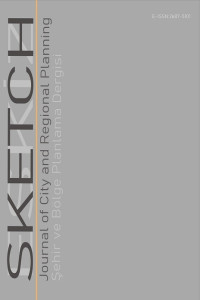Ülkesel/Milli Fiziki Plan Üzerinde Dördüncü Kez Konuşurken
Türkiye’de 1850’li yıllarda başlayan modernleşme sürecinin mekândaki biçimlenişini denetim altına alma çabasının 100 yıla yakın öyküsü, bize bu çabanın en alt mevzii ölçekten başlayıp, kent ölçeğine, daha sonra bölge ölçeğine, sonunda da ülke ölçeğine tırmandığını gösterir. 1968 yılında düzenlenen 1. Milli Fiziki Plan Seminerinde, ulusun yaşadığı kalkınma/gelişme sürecinin ülke mekânında yarattığı biçimlenmeyi, var olan ulusal kalkınma planının yöntemiyle uyumlu kılarak denetim altına alabilmek amacıyla öneriler sunulmuştur. Ülkesel fiziki plan sorununun gündemimize girmesinin ardından 50 yıl geçmiştir. Bu kısa bir süre değildir. Bu geçen yarım asır içinde müdahale etme gereksinimini duyduğumuz sorunu yaratan yapı sunum süreçleri, dolayısıyla sorunun niteliği önemli ölçüde değişmiştir. Ayrıca bu sürece müdahale biçimlerimiz konusundaki meşruiyet anlayışlarımız da değişmiştir. Bu çalışma kapsamında, bundan 50 yıl önce önerilmiş bir çözümün ne kadar uygulanıp uygulanmadığı ya da tutarlılığı üzerinde durulmayacaktır. Çalışmanın amacı, bir tarihi muhasebe yapmaktan çok, ülkesel fiziki plan sorunu konusunda günümüzde değişen yapı sunum süreçleri ve meşruiyet anlayışımız çerçevesinde neler yapılabilir sorusuna yanıt vermektir.
Anahtar Kelimeler:
National Physical Plan, National Strategy on Regional Development, Turkey
Fourth Review on the National Physical Plans
Modernization effort in Turkey started as early as 1850s along with the felt need to control its spatial development. The history of this containment effort, spanning more than 100 years till 1968, demonstrates an endeavour starting from the lower scales and extending to urban scale, and then to regional level and lastly to national level. The 1st National Physical Plan Seminar, held in 1968, has resulted with proposals aiming to control this spatial development led by the development process of the nation, by making it compatible with the with the method of the existing national development plan. It has been more than 50 years since the notion of national physical plan entered our agenda which is not a short period of time. The structure and processes that have created the problem were already intervened in this last half century, and therefore the nature of the problem has changed significantly, as well as our understanding of legitimacy of planning and intervention processes. The scope of this study is not to evaluate the implementation or consistence of a solution proposed 50 years ago and to make an historical evaluation. The manuscript aims to trace out possible trajectories that can be followed in accordance with the current context of national physical planning process and our contemporary understanding of planning and its legitimacy.
- Başlangıç: 2019
- Yayıncı: Mersin Üniversitesi
Sayıdaki Diğer Makaleler
Türkiye’de Sağlık Sistemindeki Dönüşümlerin Mekânsal Etkileri: Mersin Kenti Örneği
Kentsel Yeşil Alanlara Erişimin Değerlendirilmesi: Beşiktaş ve Şişli İlçelerinin Karşılaştırılması
Osmanlı Toplumu Sosyal Yapısının Kent Düzenindeki Temsili
